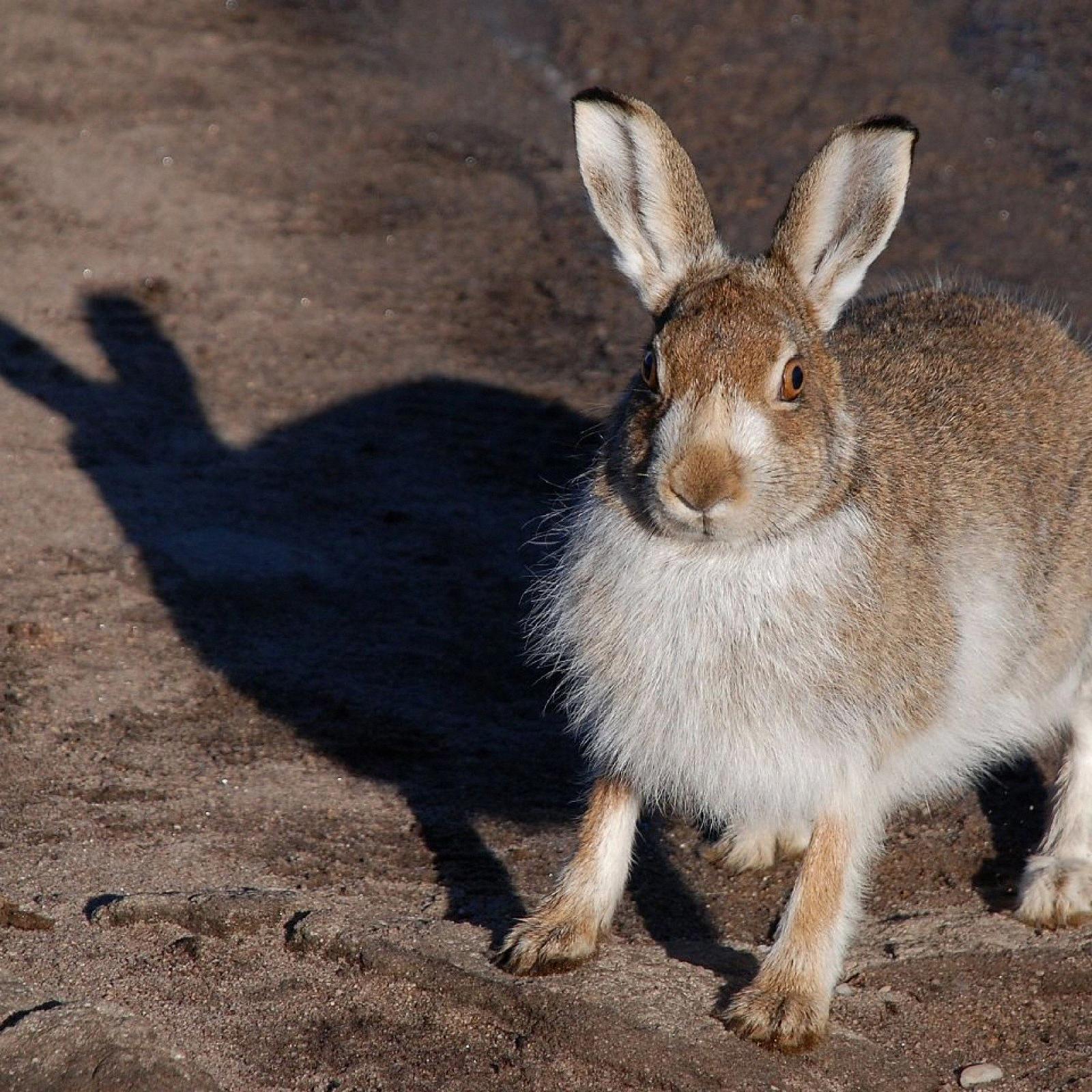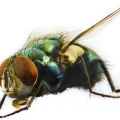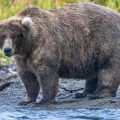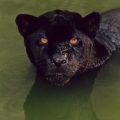When it comes to mammals, few are as well adapted to the cold climate of the northern hemisphere as the mountain hare. Found in mountain ranges aross Europe, Asia and North America, they have evolved to thrive in extreme temperatures.
Mountain hares have a grey-brown coat in summer, with a bluish tinge. This coat changes to white during the winter months, with their ear tips staying black throughout. These animals are larger than rabbits but smaller than brown hares and have shorter ears.
Their diet is varied depending on the season and their location; during summer months they feed on leaves and twigs found in forests, while those living on tundra eat alpine plants. In winter months when snow covers much of their food sources they turn to grasses and lichen instead.
The most recent estimates suggest that there are around 350,000 mountain hares across this range – a testament to their hardiness! They have been known to live up to 10 years in the wild if they can avoid predators such as foxes and eagles.
The mountain hare is an important part of many ecosystems; providng food for predators and keeping vegetation in balance through grazing. Their ability to thrive even under extreme conditions makes them an incredible species worth protecting for generations to come!
Difference Between a Hare and a Mountain Hare
Hares and mountain hares are both species of the Leporidae family, however they are different in many ways. Hares are usually larger than rabbits, but smaller than mountain hares, and have longer ears. The main difference between a hare and a mountain hare is their coats. The mountain hare has a grey-brown coat in summer whih may have a bluish tinge, and turns white in winter – only its ear tips stay black. The Irish hare may remain brown even in winter and its coat has a reddish tinge. Mountain hares can also be found at higher altitudes than other species of hare, often living in rocky areas or areas with sparse vegetation.

Source: biographic.com
What Do Mountain Hares Eat?
Mountain hares have an omnivorous diet that varies depending on the season. During the summer months, they feed on leaves, twigs and alpine plants such as grasses and lichens. In the winter, when much of their food is buried beneath a thick blanket of snow, they eat buds, bark and even roots. They also supplement their diet with fungi and berries when available. Their diet also includes small animals such as insects and rodents.
Estimating the Number of Mountain Hares in the UK
According to the most recent estimates, there are approximately 350,000 mountain hares living in the UK. This figure is spread across a range of habitats including upland moors, coastal dunes, and moorland areas of Scotland and Northern England. Mountain hares are a protected species in the UK and play an important role in the country’s biodiversity. Conservation efforts have been put in place to ensure that their numbers remain stable for future generations.
Endangered Status of Mountain Hares
Mountain hares are endangered due to a combination of habitat degradation, hunting, and a lack of successful reintroduction efforts. Historically, mountain hares have been found in many parts of Europe including Scotland, Ireland and England. However, with the encroachment of human activities such as deforestation and over-hunting, their population has dramatically declined. In Scotland and Ireland they remain relatively common but in England their numbers have dwindled to the point where they are considered endangered. Furthermore, the few attempts made to reintroduce them in England have failed due to inadequate resources or a lack of suitable habitats. The mountain hare is an important species for many reasons; it is a key predator species and its burrowing behaviour helps break up the soil which increases biodiversity. For thee reasons we must act quickly to protect this species before it is too late.
Protection of Mountain Hares in England
No, mountain hares are not currently protected in England. While they are recognised as a priority species under the UK Biodiversity Action Plan, they do not have any specific legal protection. In Scotland, however, mountain hares are now protected by the Animals and Wildlife (Penalties, Protections and Powers) (Scotland) Act 2020 whih came into effect on March 1st 2021. This law provides protection for these animals against certain human activities that may harm them or their habitats. As of yet, similar protections have not been put in place in England.

Source: newsweek.com
Differences Between Rabbits and Hares
The main differences between rabbits and hares are size, ears, hind legs, and habitat. Hares are generally larger than rabbits, with longer ears and longer hind legs. They tend to live in solitary nests above ground, wile rabbits often live in colonies of up to 20 in underground warrens. Additionally, hares have the ability to leap great distances and can reach speeds of up to 40 miles per hour when running. Rabbits, on the other hand, rarely move more than a few feet from their burrows. Hares also breed earlier in the year than rabbits; whereas rabbits tend to give birth twice a year, usually early spring and late summer or autumn, hares reproduce as soon as they reach sexual maturity at around 3-4 months old.
Conclusion
Overall, the mountain hare is a fascinating species that can be found in various habitats ranging from forests to tundra. During summer months, they feed on leaves and twigs while during winter months their diet changes to alpine plants, grasses, and lichen. These hares are larger than rabbits but smaller than brown hares and have shorter ears. They have a grey-brown coat with a bluish tinge in summer which turns white in winter except for their ear tips which stay black. The Irish hare may remain brown even in winter and its coat has a reddish tinge. An estimated 350,000 mountain hares inhabit this range today making them an important species to protect.












